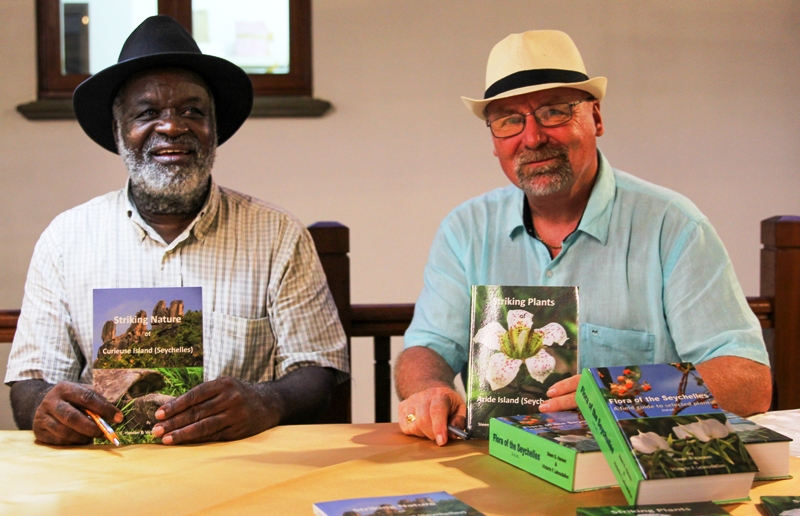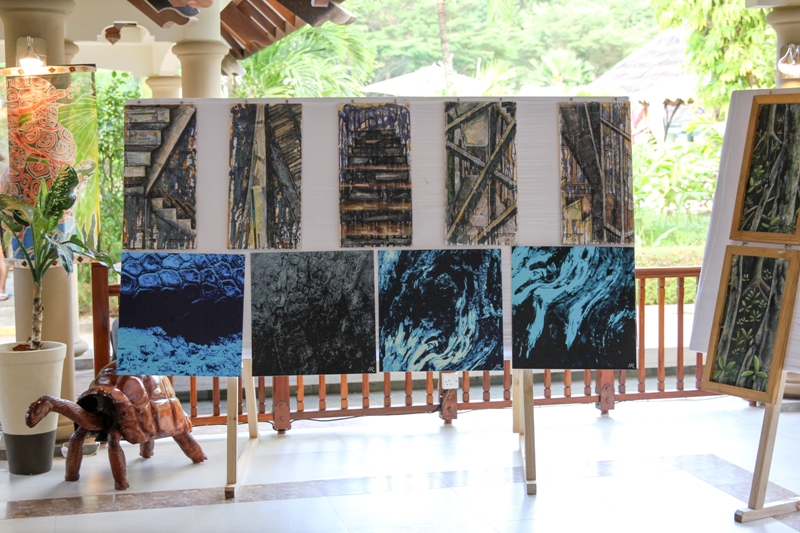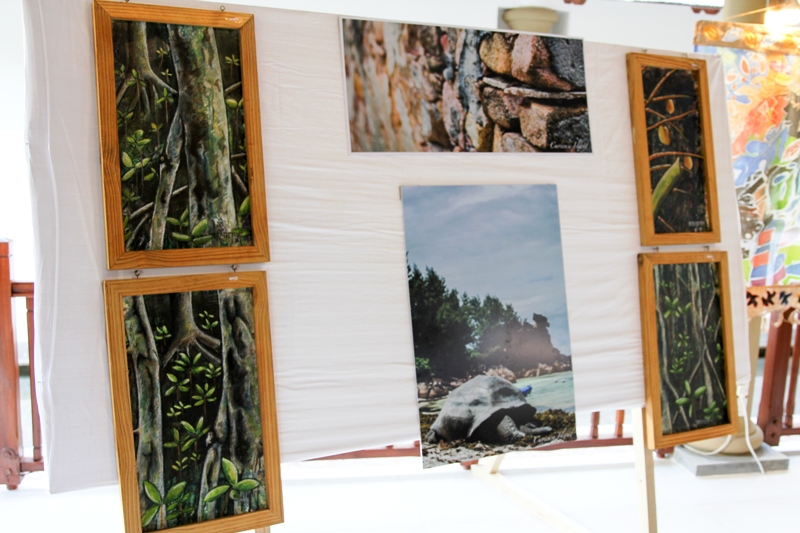Protected Area Day on Praslin - Art exhibition, launch of new website and books |22 February 2018

Protected Area Day, celebrated on January 31 each year, was this year marked by various activities across the country. On Praslin, this was commemorated with an exhibition of various artwork about Curieuse Island. The event, organised by the Seychelles National Parks Authority (SNPA), was the ideal occasion to launch the SNPA’s improved website as well as two books about the striking nature and plants of Curieuse and Aride islands.
Present at the ceremony, held at Le Domaine de La Reserve Hotel, were the chairperson of the SNPA board Selby Remy, chief executive of SNPA Flavien Joubert, representatives of the Praslin business association and other stakeholders.
In his address, Mr Remy, highlighted the important role of protected areas and the need to protect our cultural values and biodiversity.
The exhibition, which comprised various artwork of members from ProArt Seychelles -- an association of visual artists -- showcased the nature of Curieuse, one among the 38 protected areas around the country.
“The same exhibition was held in December last year on Mahé and we found it only fair to have it on Praslin as well. This is in our continuous effort to find innovative ways of raising awareness and educating people about our protected areas,” Mr Remy shared.
The artwork took approximately 6 months to complete after a visit by the artists on Curieuse last year.
It was Mr Joubert who officially launched the SNPA’s new website. The website, which was already in use, has been improved and is now compatible with various devices. Among the highlights of the new website are a payment system which will allow guests to buy tickets to national parks online, the SNPA’s trust fund online donation system as well as a newly developed app for vital details about various protected areas and trails.
Steen Hansen and Victorin Laboudallon also launched two of their books which demanded much research work from the authors and give an in-depth understanding about the various flora and fauna occurring on Aride and Curieuse.
The ‘Striking Nature of Curieuse Island’ starts with an overview of the history of the island and the leper colony which settled there. From the first African slave lepers in 1829, the island has since experienced many changes.
The island, which holds a great biodiversity of plants, animals, beaches, marshes, hill slopes and rocky areas, unfortunately suffered a devastating fire in 1967 and ever since restoration and reforestation work has been ongoing. Many species, including more than 150 coco de mer plants were ravaged by the fire.
The authors explore various species in details with accompanying photos, such as the various birds, crabs, tortoises, and shrubs.
The book also touches ‘The old turtle pond’ set up in 1909 as a breeding site for hawksbill turtles and conservation work on the island.
The second book entitled ‘Striking Plants of Aride Island’ describes many of the island’s trees, shrubs, creepers, climbers and lilies, including the endemic ‘bwa sitron’ and others, in clear manuscript and matching photos which makes the book ideal as an informative keepsake.
“Aride is an important wildlife sanctuary and Curieuse simply has it all, from the beaches, shrubs, mangroves, marshes, hill slopes and the unbelievable history of the leper era. Publications about these two protected areas were minimal and we are privileged to have been able to work on these two books,” Mr Hansen shared in his address to the attendees.
Copies of the books were handed out to Uzice Samedi, manager of Aride Island and Mr Joubert.
“I dedicate this book to a good dear friend of mine, Aterville Cedras, who worked tirelessly for the conservation and restoration of Curieuse for over 22 years. Luckily, before his passing last year, he shared some important information about the island with me and today I pay tribute to him,” shared Mr Laboudallon.

Some of the artwork on display in the exhibition

Text: Nadia Bedier
Photos: Romano Laurence




